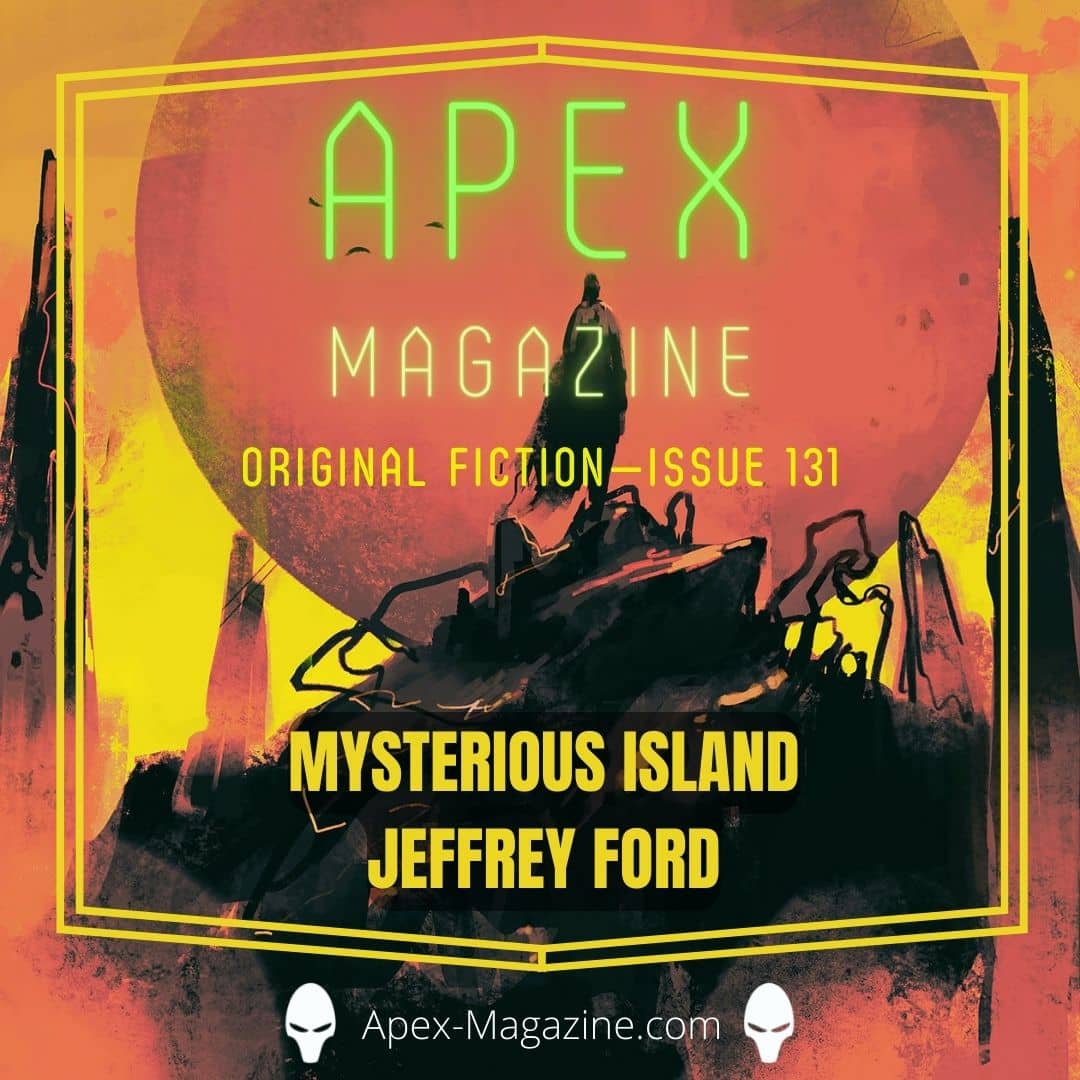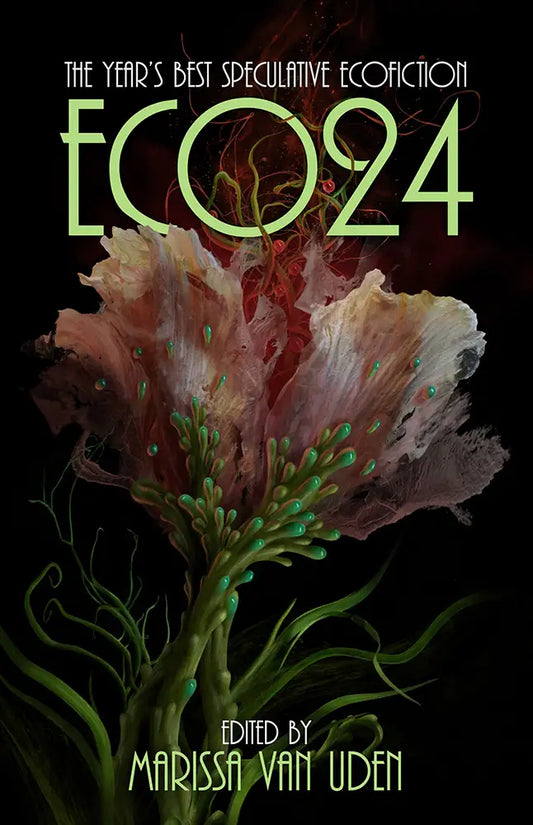
From the earliest days when we moved in, I was intrigued by it. I’d stand upstairs in our bedroom and stare out the back window, past the orchard, past the garden, and beyond our property line to the vast farm field that stretched out behind our place. It belonged to Hank, who also owned the farm across the road. The corn or soybeans in yearly rotations went on forever, like an ocean. About a quarter-mile, maybe a little farther out into the field, there was a gathering of trees.
I had to search online for the appropriate term for a large thicket in the middle of a farm field. It’s called a “copse.” Mostly hickory and white oak, and those oaks were enormous. Who knew how long they’d been growing there? The area of this wooded island amid the harvest was about four or five acres, which seemed like a lot of land for a farmer to give up no matter how stunning it looked from a distance. There was a road two miles east that I took home from work, and along a certain stretch of it, I could look way out across the field and see the dimensions of the island from a different vantage point, which helped me in my calculations.
The analogy to an island slipped fast as light into the cavern between my ears. It was the end of summer, just before the corn was due to turn from green to brown. A wind blew across the field and shook the tassels of the millions of slow dying stalks. Amid the undulating waves, the old white oaks jutted up, and I immediately thought of an island surrounded by a green sea. Thenbang, bang, bang, I thought in rapid-fire of all the fictional islands I’d read about and imagined. There was the island inMysterious Islandby Jules Verne (called Lincoln Island by its castaways). There was Robinson Crusoe’s island; the goats, the fort, the tedious pace, and those later take-offs on DeFoe’s work—Fridayby Michel Tournier andFoeby Coetzee, and Swift’s tiny kingdom inGulliver’s Travels, andTreasure Island, Moreau’s, Huxley’s, Lessing’s inBriefing For A Descent Into Hell, even Ballard’sConcrete Island,The Island of the Day Before, the one inThe Invention of Morel, and the haunting islands of the Odyssey and Sinbad.
On and on. That distant gathering of trees held within it the spirit of all my island daydreams, a sense of adventure and isolation, even hallucination. The copse made its way into the stories I’d been writing. Five recent publications mentioned it in one fictional form or another. Sometimes, even for as much as a year, I’d lose track of the Mysterious Island, swaying out there above a sea of soybeans in Threadwell, Ohio’s constant breezes. My attention and my heart were elsewhere—on my wife or sons or teaching. Impressions of the island lodged in my imagination more often when I was writing. The other times were about blocking daydreams. I just didn’t want to deal with more than one reality at a time.
After a long hiatus from the island, I was out in the back to get a closer look at a fallen cardinal. It lay on the snow like a pool of blood. I went with the pit bull to inspect, having caught sight of it from the window over the kitchen sink. My first thought was how sad Lynn would be to see it. She fed the birds all year long with various seed feeders and suet and, at Christmas, pine cones filled with peanut butter and more seed, tied with ribbons to a giant wreath that hung on the door of the shed. Of all the winged visitors, the cardinals were her favorites, and she would often call me from another room to come and see when there was one at a feeder.
I heard the female cardinal calling as I stood over her dead mate, but couldn’t spot her in the crisscross of barren branches. The dog sniffed at the corpse. “Get out of there, Peps,” I told her, and walked over to the shed. Inside, I found the snow shovel leaning against a stack of wine boxes. I grabbed it and went back to lift the bird off the snow. Carrying it behind the shed, the dog followed. There, I tossed it on a pile of frozen leaves beneath the recent snowfall, figuring that ought to do it. The poor thing would be snatched in the dark by a fox or coyote, given the turkey vultures didn’t eat it before the day was out. It was then that I looked up away from the red bird and out across the barren field. What I saw was Mysterious Island, its old giant trees gray and winter barren. The snarls of undergrowth—stickers and brambles—were like crazy thoughts.
Again, I noticed the island a few times a week, imagined its pond, the early morning sun streaming through it, birds in the canopy, deer leaping fallen logs. In our sixth year in Threadwell, Lynn rose early on Thanksgiving morning, dressed warmly in leggings and mittens, yellow satin Yankee Jacket, and one of those hats with ear flaps like they wear in the Andes. Her feet are small and she wore boy’s red rubber galoshes bought on the cheap at Walmart. Before starting to make ready for the holiday, she decided to go out and get some air, think about what she was thankful for. She took Finn, the black hound.
Lynn had also always found the copse intriguing, but in all the years we’d been there, neither of us had ever mentioned it to the other until she returned that morning just as I was making coffee.
“We went back to those trees,” she said, pointing over her shoulder, through the sliding glass door, toward the field. “It’s amazingly peaceful in there.”
I was taken by surprise by the news that she’d travelled to the island and was back before breakfast. My past daydreams of the journey were arduous and frightening. In a moment, all those old possibilities were flattened. I had to laugh out loud with joy for her having planted the first flag on Mysterious Island.
“I sat down on a log and was thinking about my family,” she said. “Especially my dad passing away, and what that meant. Last leaves were falling around me, and the wind sounded like singing in the fields. In the middle of that, I heard a twig snap. I felt a quick freeze up my spine, knowing it couldn’t have been Finn, as he was sitting next to me on the ground. I spun around and caught a glimpse of a gray-silver blur as it leaped over bushes retreating from us. I know there are no wolves in Ohio, but this was no coyote. It was a big, shaggy creature.”
I took what Lynn had described of her early morning expedition and assimilated all those images and ideas into my personal daydream of the place. In summer one year, we barbecued on the porch out back every night. I sat at the glass-topped table with a pair of binoculars, and a bourbon on the rocks, waiting for the deer to show themselves at the shoreline of the copse. After watching them feed for a while, I’d hand the glasses to Lynn and she’d spy on them. We drank and listened to “Cocktails for Two” by Coleman Hawkins and Ben Webster.
No other song stirred me to visions of the island like that old tune. I made a deal with Lynn and she allowed two plays a night of it. Back and forth we passed the glasses until the citronella candle was lit, and we sat idly drinking, reminiscing, listening for the chimes on the porch. There was one low like a harbor bell that meant a good strong wind was blowing from the west. Late at night, after a scorching day, that strong cool breeze washing over you was like being born again.
Through the years, I kept up my search as to the origins of such copses in farm fields. What I was able to find online was that it was a definite phenomenon; my Mysterious Island wasn’t the only one. There were theories posited by people, some farmers, some historians, some neither. It was said in multiple places that the trees were a respite from the sun during planting and harvesting seasons—a place to let the plough horses and oxen rest. Often it was mentioned that there was supposedly a water source within the bounds of the copse, a stream surfacing from underground, a small pond. No one claimed the water source theory as being definitive, but a lot of those who commented on copses promulgated it.
There was an individual online who had a site that catered to information and conversation concerning copses in the middle of farm fields. His theory was that the farmers left a piece of land covered in trees in the center of the farm as an aviary from which birds of prey could watch for starlings and mice—a kind of agrarian panopticon. Pest control is the reason for Mysterious Island. Everybody disagreed with the guy, some of them vehemently like the whole thing mattered. There were at least a dozen theories that weren’t completely lunatic.
One or two were intriguing, but none had the ring of authenticity. So I asked Hank, the farmer, one afternoon. Hank’s family had farmed the land around us for more than a hundred years. Lynn and I lived in what was once the original farmhouse, since renovated, but the older part of the building was 120. I mentioned the copse to him, and asked, “Why is it there? To block the wind or something?”
“Today, a farmer would clear cut that and plant on it,” said Hank.
“Did your grandfather or father ever mention what it was for?”
He looked out across the field at the Mysterious Island. He smiled and said, “I don’t know what the old-timers had in mind with that.” He looked at it for a second more and then shook his head.
“Would you ever level it?”
“I’m not saying they didn’t have a reason,” said Hank. “I’m just saying that I don’t know what it is. Seems like if it was a mistake, they’d have figured that out before a hundred years was up.”
Sometime after that, I read on the internet that the Lenape, a tribe that thrived in Ohio, had been corn farmers going back 10,000 years. For some reason, I’m sure that bit of info set off a dream I had that night about birds of prey, a hawk and an owl dressed in tweed jackets, and wearing glasses. They were in my childhood public library at night, after closing, erasing tidbits of history and slowly changing reality incrementally. They came from another dimension and showed me how they went back in the town records, erasing and changing what certain publications and reports said. I watched as they erased this girl I’d known in high school from existence.
I thought I might venture back to the island once I retired from teaching, but I haven’t gone yet. I’ve since daydreamed of going there, and beneath the cathedral columns of white oak trunks and amid the calm silence, I found a car, completely intact but badly rusted. The windshield and all the side windows were unbroken, not even a fracture. I’ve since identified it as a 1976 Chevy Biscayne, originally robin’s-egg blue. There was nobody in it, but I found an old flashlight, a map of Ohio, and a journal in the glove compartment. On the first page of the small black book was an address to send it to if it was ever found.











